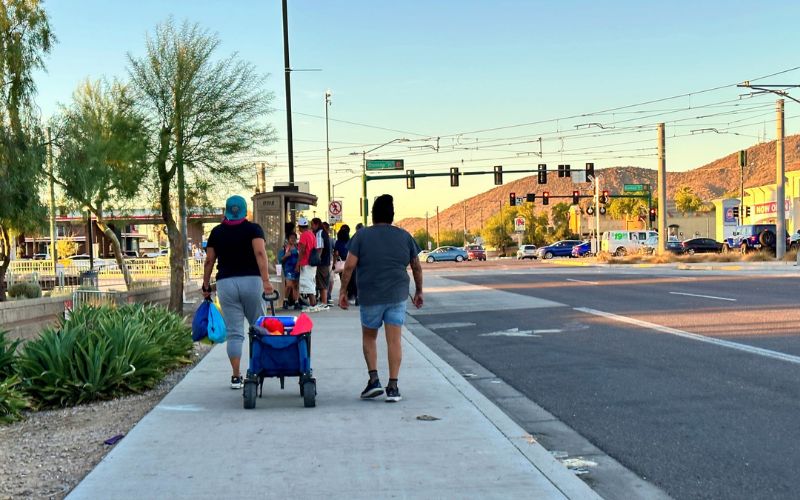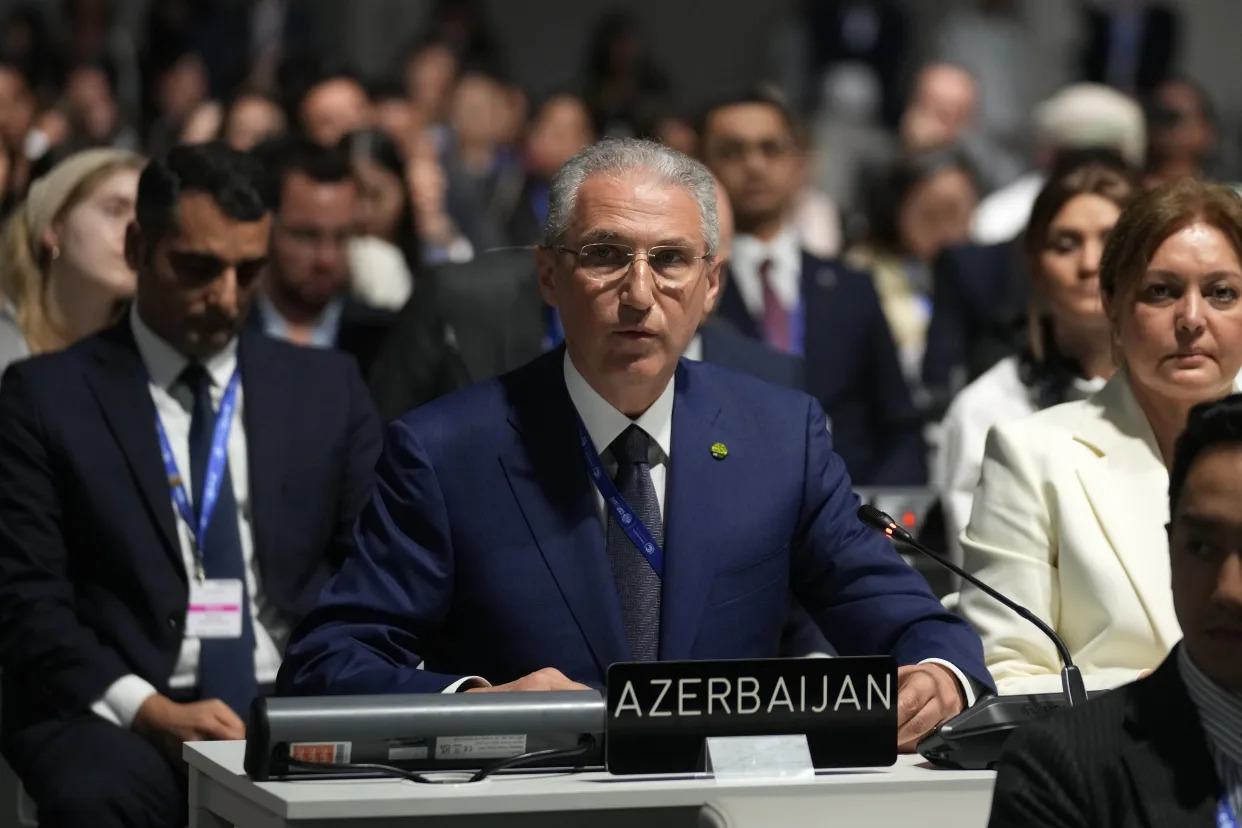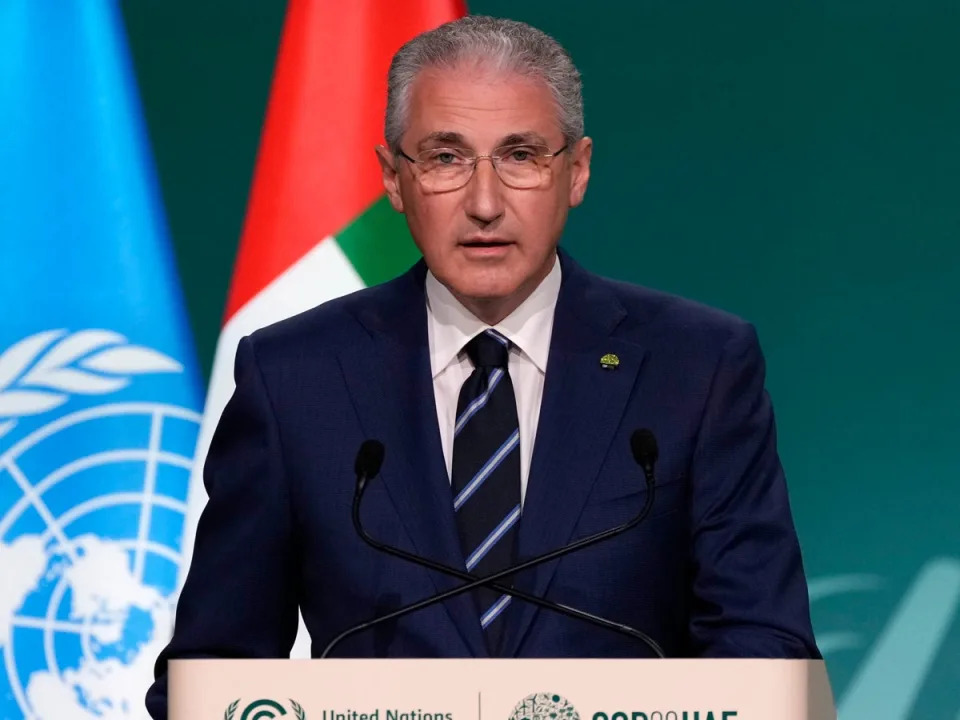With U$ Government Help Lacking, Volunteers Scramble to Help Indigenous Victims of Health Care Fraud

Stolen Benefits Stolen Peoples
Loading the back of a Subaru Outback with supplies, three Indigenous women make sure they have enough water, food and care packages to serve Indigenous people who have been displaced in different parts of the Valley.
“It’s gotten worse,” StolenPeoplesStolenBenefits Advocate Reva Stewart said of the displacement of Indigenous people in the city.
Most of the displacements are the direct result of the fraudulent behavioral health facilities that proliferated unchecked for years across the Phoenix area, targeting Indigenous people who are enrolled in Arizona’s Medicaid program so that the facilities can bill the program, often for services they never provided.
“Deaths are still happening (as a result of these fraudulent facilities),” Stewart said. “We shouldn’t be having any deaths if they’re in a (legitimate) sober living facility or a home.”
Stewart, who is Navajo, has been advocating and helping Indigenous people who have been displaced by these fraudulent facilities for about two years.
In that time, she said the number of Indigenous people who have been brought down to the Phoenix area, some even from out of state, by these fraudulent facilities is only increasing, and she does not see any genuine efforts from officials to help.
“We’re going through genocide,” Stewart said of how bad the crisis has gotten. “Acknowledge that this is actually going on.”
Stewart and StolenPeoplesStolenBenefits, a volunteer group of Indigenous people based in the Phoenix area, are the boots on the ground across the Phoenix area, and they go out almost every day to help in any way they can.
Four people provide outreach efforts for the group: Stewart, Jeri Long, Raquel Shaye and Jared Marquez.
During one of their outreach efforts this fall, the group’s first stop was a park near the Phoenix Indian Medical Center at 16th Street and Indian School Road. The team loaded up a wagon full of supplies and walked around the park, talking to anyone they believed may need help.
Stewart pulled the wagon full of water and care packages as Shaye approached people, many of whom were Indigenous, asking if they needed assistance. Long walked alongside Stewart with a bag of peanut butter and jelly sandwiches, offering one to everyone they approached.
“We see the recruiting on a daily basis,” Stewart said. Even when they are out doing their outreach efforts, she said they constantly encounter people handing out flyers for rehabilitation services or trying to talk people into going with them.
Once they finish with one area, they move on to the next. The group has identified areas across the Valley where displaced Indigenous people may gather.
“They recognize us now,” Shaye said. She added that the group members try to help everybody because many feel alone, unwanted or as if they’re a burden.
Due to the amount of outreach their group has done, they’ve built trust among the Indigenous people they help, often being told precisely where the fraudulent rehabilitation houses are located and the conditions residents are kept in.
“I report what relatives tell me,” Stewart said. “Once they get comfortable with you, they’ll tell you, they’ll give you the address, and I report that.”
Stewart said many of the people being displaced have been traumatized by these facilities and are often left in worse states than before they entered. She said these fraudulent facilities offer promises of stability with jobs and housing but also sobriety. But those promises are empty.
‘It’s like our government does not care’
Stewart remembers how local, state, federal and tribal leaders made public statements that they would help the Indigenous people left on the streets after a sweeping crackdown on the fraudulent rehabilitation facilities in May 2023, but their attention was short-lived.
“They said they were going to be out here helping,” Stewart said. Still, the last time she saw any government official make an effort to help was shortly after Gov. Katie Hobbs and Arizona Attorney General Kris Mayes announced they would start shutting down these fraudulent facilities.
“The shutdowns have happened, but you don’t see anybody helping our relatives get off the street,” Stewart said.
Stewart has been raising awareness about the fraudulent rehabilitation facilities for two years. During that time, she gathered testimonies from people who these facilities have harmed, documented encounters with individuals recruiting for them, maintained a list of people who have gone missing and kept count of the people who lost their lives after spending time in these places.
“It’s like our government does not care,” she said. “I don’t understand.”
Stewart said she had written hundreds of reports on her findings and has shared them with the Governor’s Office, the Attorney General’s Office, the FBI, Arizona Health Care Cost Containment System (AHCCCS), Arizona tribal leaders and the Office of the Inspector General.
“They’ve never responded,” Stewart said, and it’s been a year and a half since she started sending out her reports. She has about three large boxes full of papers documenting her work.
When Hobbs and Mayes publicly addressed the issue for the first time in May 2023, they called it a “humanitarian crisis” and a “stunning failure of the government.”
Since then, the state has shut down hundreds of providers for behavioral health, residential, and outpatient treatment services after investigators found evidence that they defrauded the state’s Medicaid program out of hundreds of millions of dollars.
AHCCCS spokeswoman Heidi Capriotti said an updated list of suspended providers is available almost every Friday, and the agency continues to suspend providers when they can.
“We cannot impose a payment suspension on a provider until another law enforcement agency has accepted our referral and basically verifies our findings,” Capriotti said.
When providers are suspended, it is only for payments, she added. The provider can still provide services to their patients but will not be reimbursed for any submitted claims.
Provider payment suspensions, known as credible allegations of fraud suspensions, are the first step of required action when Medicaid payment fraud is identified and the beginning of multi-agency investigations.
In a statement to the Arizona Mirror, Mayes reiterated her stance on the fraudulent behavioral health facilities, saying it is “undeniably one of the worst government scandals in our state’s history.”
“The magnitude of this scandal and its profound human toll on those grappling with addiction problems cannot be overstated, and their suffering has only been exacerbated by the systems that should have protected them,” she said. “The Arizona Attorney General’s Office will continue to investigate and aggressively prosecute the individuals and entities who have defrauded the state of millions of dollars by exploiting vulnerable individuals.”
The most recent case from Mayes’ office involving fraudulent facilities was announced on Dec. 6, when a grand jury indicted 10 people on charges of illegal control of an enterprise and other charges related to patient brokering.
The defendants allegedly ran unlicensed sober living or transitional living homes around the Valley. Those 10 people are accused of agreeing to send 75 patients, many of whom were on the American Indian Health Plan administered by the AHCCCS, to a fake behavioral health care facility.
Mayes stated that her office is ready to assist AHCCCS and the Governor’s Office in any way possible as the state continues to manage the humanitarian fallout resulting from the fraudulent sober living facilities.
The Arizona Mirror contacted Hobbs’ office multiple times for an update, but no response was received.
The local FBI office in Phoenix was another agency committed to addressing the crisis. The office put a call out to victims who may have been recruited to live in and receive services in group homes.
In an email response to the Mirror, FBI spokesman Kevin Smith stated that it is still an active investigation.
“The FBI’s involvement here is a federal investigation into healthcare fraud that is occurring, essentially the misuse (of) millions of taxpayer dollars,” Smith said in an email to the Mirror.
“While the human toll is very much a part of this story, it is not within the FBI’s scope or purview to work on the social service side of this case,” he added.
Smith said the FBI is working to find the people setting up and running the fraudulent services to remove them from the health care system so that they can no longer victimize people and deter others from trying.
As of December, more than 300 health care providers for behavioral health, residential, and outpatient treatment services have been shut down. AHCCCS updates the list of suspended providers on their website.
When the shutdowns were announced in May, Capriotti said there was some concern that fraudulent providers would disappear and leave people stranded with no follow-up care or care coordination for the patients.
That is why AHCCCS launched the 211 hotlines, Capriotti said, so that anyone affected by the provider closures has a place to get help.
“We are very concerned about the humanitarian side of this,” Capriotti said, and that is why AHCCCS did not start issuing suspensions until there was a “mitigation strategy” in place with the 211 hotlines.
Capriotti said AHCCCS is working with Solari, the statewide crisis vendor, which manages that hotline with various state partners to find temporary lodging or other behavioral health services and transportation, if needed.
“As of Aug. 22, we had fielded more than 11,700 calls to that hotline,” Capriotti said, but those calls are not all from people affected by the shutdowns.
Capriotti added that AHCCCS has deployed seven mobile crisis teams and has coordinated more than 13,000 nights of temporary lodging.
“We’ve directly helped more than 4,000 individuals,” she said, adding that AHCCCS also took the time to educate law enforcement officers across the state and provide them materials to hand out about the 211 hotlines.
“If they come across people on the street who have been affected, they know how to refer people to 211,” Capriotti said.
In order to eliminate fraudulent billing, Capriotti said that AHCCCS has made multiple system-wide improvements to the Medicaid payment system.
Some of the changes include eliminating the ability for members to switch enrollment plans over the phone, disallowing providers to bill on behalf of others and setting a specific rate for billing related to drug and alcohol treatment services.
“We’re very concerned about making sure our American Indian Health Plan members are safe and getting the services they need,” Capriotti said.
Lots of talk, little action
While the fraudulent scheme has resulted in what state officials are now calling a “humanitarian crisis” and a “stunning failure of government,” the StolenBenefitsStolenPeople team still believes not enough is being done to help the Indigenous people who were preyed on.
Long said it’s not that officials are not aware of their grassroots organization’s work, but it’s more along the lines of them not wanting to acknowledge it.
“It’s one of those things where there’s just no justice being done,” Long, who is Navajo, said. “There’s no accountability, there’s no action, there’s nothing, and they won’t listen to us.”
For instance, the team has provided reports and reached out for collaboration with state agencies and local tribes, but it has often resulted in little to no commitment on their end.
The team recalls how the Navajo Nation established Operation Rainbow Bridge in response to the crisis in May and how the Navajo Nation Police Department set up on-the-ground efforts for a few weeks during the summer.
But the team has yet to see much progress since.
“We don’t understand why a lot of the tribes are not stepping up and helping,” Long said.
More recently, the team worked on organizing a mass transport with the White Mountain Apache Tribe to get some of their citizens who were displaced by the fraudulent facilities back home from the Phoenix area.
Shaye, who is from the White Mountain Apache Tribe, said since she started the outreach work, she has noticed that there are a lot of her community members who were victimized, including some who died of overdoses in the fraudulent homes.
“We counted 38 deaths,” Shaye said.
A majority of the work done by the group relies on funds they raise through their GoFundMe page, which helps pay for their outreach efforts and transportation costs to get Indigenous people home.
Long said they’ve paid for bus and plane tickets and even driven people back to their homes. They have had people call them in the middle of the night asking for help.
“We’re getting a lot done, and a lot of people trust us now,” Long said. “We want to help as many as we can. We can’t save everybody, but we want to help as many as we can who want the help.”
Long said their efforts have helped a lot of people, and they’ve been able to place people in legitimate treatment facilities or get them safely home.
They’ve had families reach out to them for help locating a missing loved one, and Long said sometimes they’ve been successful, and sometimes they’re not.
Long said the current crisis impacting Indigenous people is not okay, and it is not okay for an already underserved population to continue to be ignored and for what is happening to be swept under the rug by leaders who promised they’d help.
“Don’t continue to think that this is just gonna go away, which a lot of them are hoping that it’ll just go away. It’s not going away. It’s getting worse. Do something about it,” she said. “Be accountable for your actions. Be accountable for the words that you said back in May.”
Stewart said the group’s whole purpose is to make sure that those being displaced know that somebody cares who will share with them what their options are if they choose to go back home, get treatment, or go into a legitimate facility.
“Regardless of what they’re feeling, they want to know you care,” Stewart said.
Stewart said their group still tries to utilize the state resources set in place, like 211, but since they launched, she has seen a decrease in the sense of urgency to provide help.
“There is such a delay that they tell them to go to the homeless shelters,” she said. “That’s all they do, or they call us.”
It is frustrating, Stewart said, because it may be “convenient” for the 211 operators to shuffle the ones seeking help away to a homeless shelter, but in the end, it doesn’t accomplish much because these shelters end up calling their group for help.
“CASS, the homeless shelter in downtown Phoenix, they have reached out to us,” she said, and they’ve had tribal officials, state officials, family services and other entities reach out to their group for help.
“It’s non-stop for us,” Stewart added.
Since the state implemented the 211 hotline services, Stewart said it was very helpful initially, but now, agents working with 211 have often sent people in need to their group for help.
“211 tells them to call us,” she said. “We’re helping, but why are they using us as a resource when they should be a resource?”
Stewart said she’d like to know why 211 is not doing what it was initially set up to do, which was to help ensure the health of the Indigenous people being displaced.
Many of the Indigenous people being displaced were promised some form of help and then ended up being put out because the facility they entered ended up being a fraud.
Stewart said the fraudulent facilities are such a massive scheme in Arizona that officials across the state should have been on board with the efforts to combat it, regardless of which city they were in, because these facilities are spreading.
“They’re popping up everywhere,” she said, adding that she has records of these places setting up in Wickenburg, Prescott, Pinetop, Camp Verde, and Tucson.
In September, the city of Tucson dealt with its first significant shutdown of these fraudulent services, which displaced dozens of Indigenous and non-Indigenous people alike from the Ocotillo Apartments and Hotel.
The issue has been discussed within the Tucson community before. Victoria Boone, the wellness director for the Tucson Indian Center, held a town hall about the topic over the summer.
Boone said fraudulent treatment homes started popping up in the Tucson area within the past year, and it’s become more prevalent in the last six months.
“It appeals to a lot of people because it’s a roof over their head,” Boone said. She’s seen the recruiting happen right outside their office in downtown Tucson, where people would hand out pamphlets, brochures and business cards.
She said she understands the appeal because they are pulling individuals off the street or from their tribal lands, promising food, shelter, clothes, work and the hopes of getting sober. But when they get to these places, that’s not what happens.
Boone said they’ve had individuals come into the Tucson Indian Center and share their experiences with these fraudulent homes. She’s heard people say they’ve had their documents stolen or were instructed to lie about their addictions so the homes could bill for services.
“They’re not getting true help,” Boone said.
Stewart said she wants accountability from the Tribal, state and federal leaders who promised to help those impacted by this crisis.
“I want accountability for all the families that have to deal with this,” she said, because so many families are not being heard, and people have died due to these fraudulent facilities.
“This should have never happened,” Stewart added. “Why is it still happening?”









